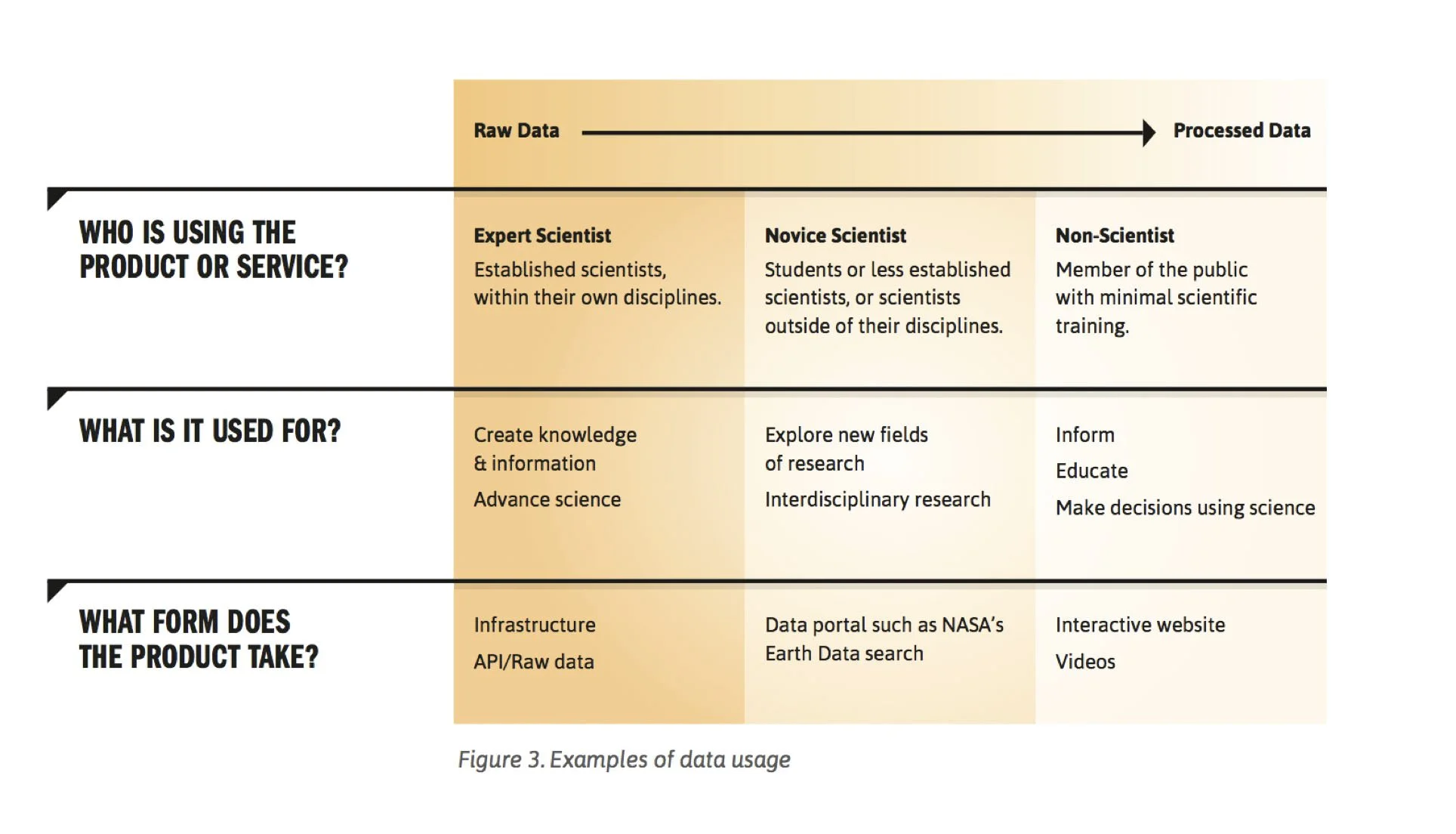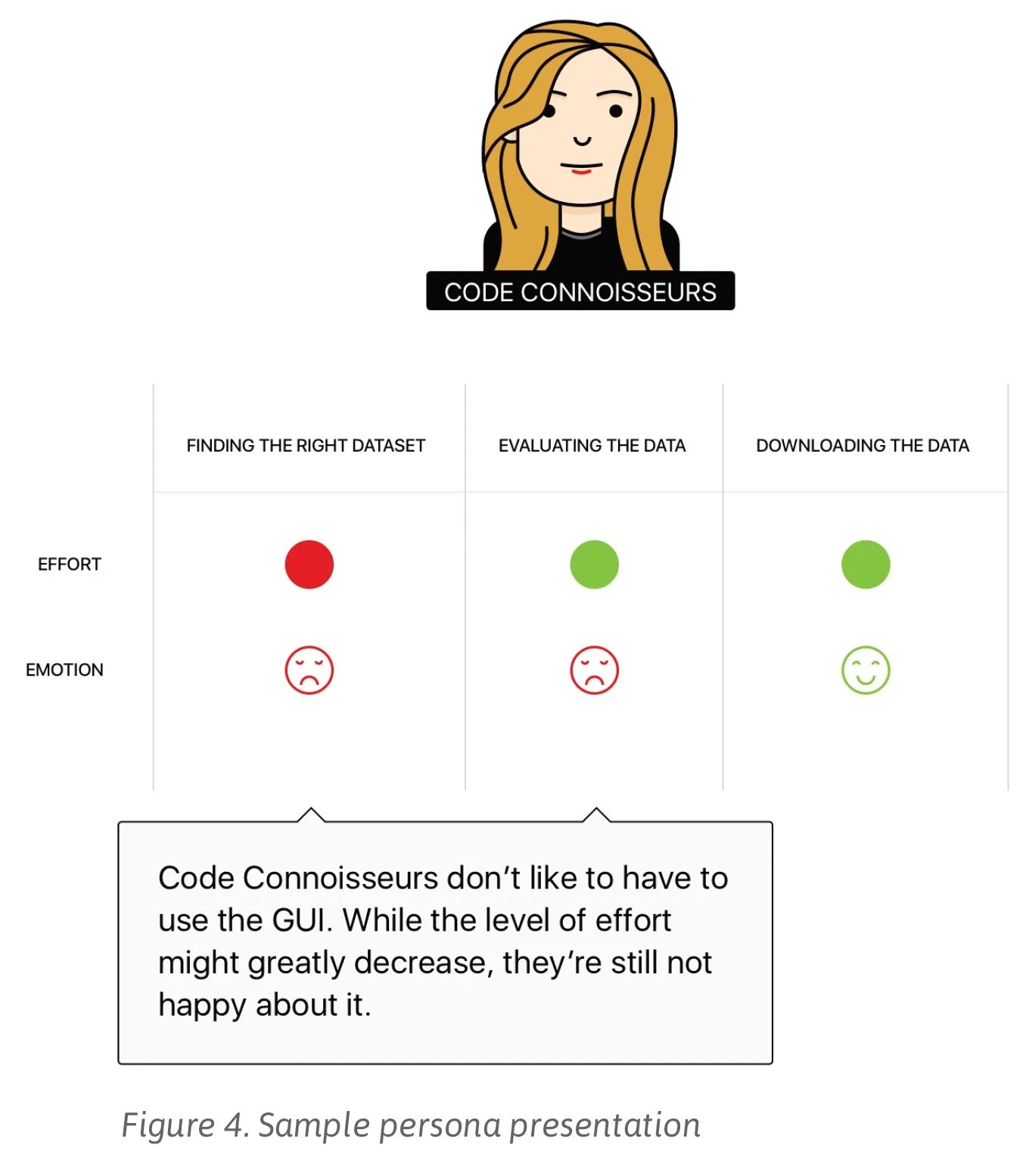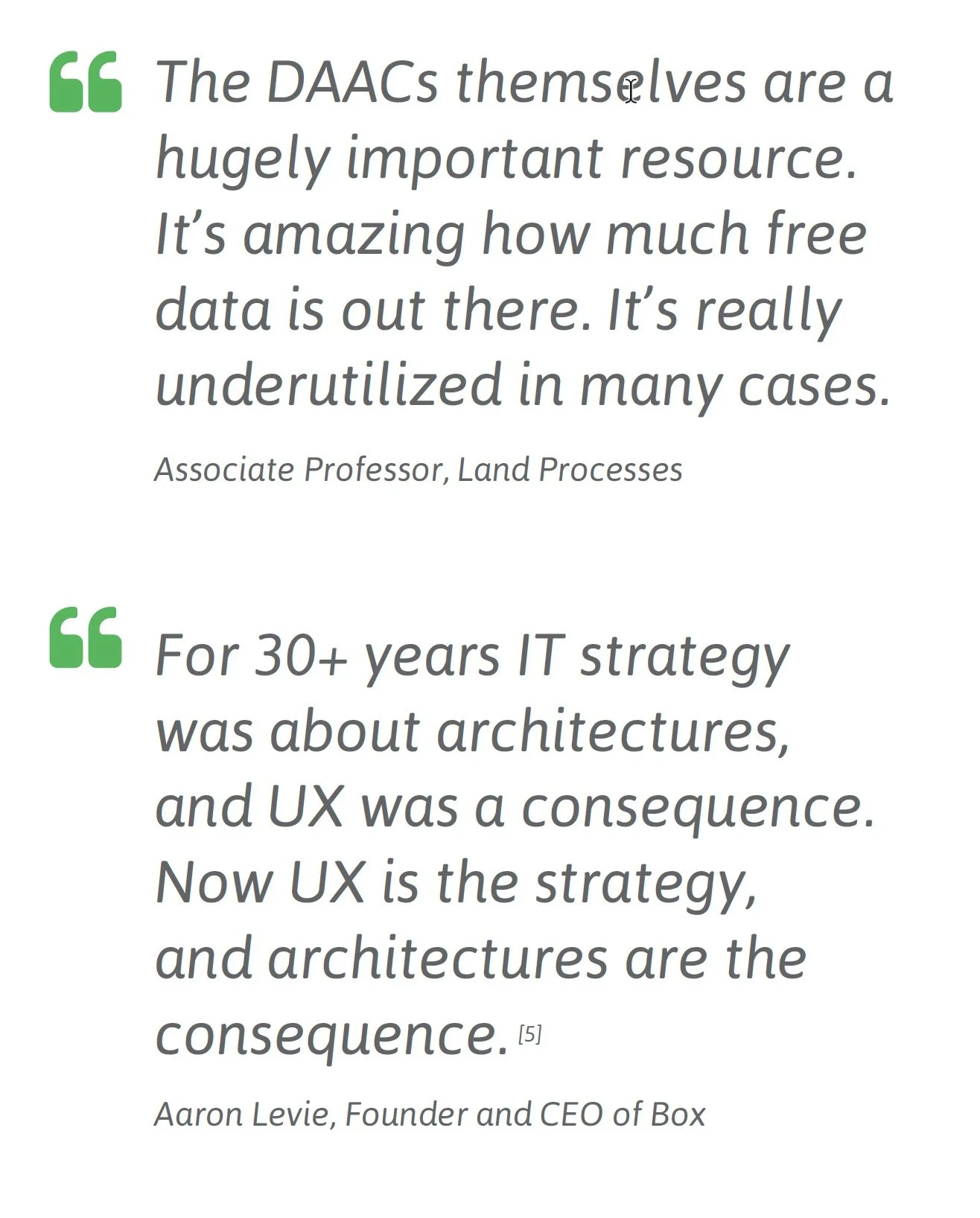
Blink White Paper: Making Scientific Data Usable & Useful
Over the past four years, Blink UX has engaged with NASA and its partners to improve the UX of several NASA products.
Our collective efforts have been focused on tactical and strategic improvements for how people search, discover, and engage with NASA’s data products. User-Centered Design (UCD) and User Research can help NASA continue to modernize its infrastructure to make data more useful for creating and expanding scientific knowledge.
NASA has an opportunity to help scientists focus their time on innovative scientific work and to make interdisciplinary research easier. This document provides a high-level User Experience (UX) strategy, based on user research for NASA’s Earth Science Programs (though much of it will be applicable to other programs).
A well-designed UX frees scientists to focus on innovative scientific work.
Barriers to innovative science include the following:
1. Routine tasks are time and labor-intensive.
2. Limited knowledge of, and access to, data resources is problematic.
3. Unfamiliar data sets and products are challenging to discover, download, and understand.
Blink interviewed several NASA employees while researching for the document, including Thomas Wagner (NASA HQ), Kevin Murphy (HQ), Andy Mitchell (GSFC), and Charles Webb (HQ).



